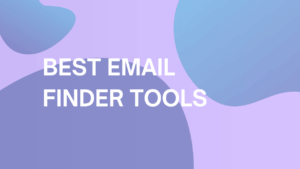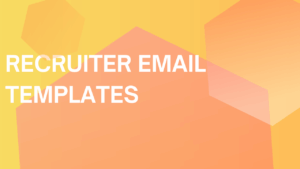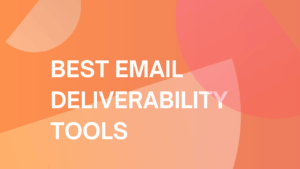Cold Email Sequences: A Comprehensive Guide for Success
What Is a Cold Email Sequence?
A cold email sequence is a chain of automated emails aimed at potential clients who have yet to engage with your brand.
The process can be explained as sending an initial email to pique interest, followed by a series of tailored messages to cultivate that initial connection into a meaningful business relationship.
Tip: How to write a cold email
This isn’t a one-shot endeavor.
It’s a carefully structured series of emails that can convert cold leads into paying customers.
Why Email Sequences Matter
a) Initiating the first point of contact
Think of yourself at a social gathering. You could stand in the corner, waiting for others to approach you, or you could introduce yourself proactively.
Which do you think would lead to meaningful interactions?
Similarly, this process lets you initiate contact with potential clients, setting the stage for a fruitful relationship.
b) Nurturing relationships over time
First impressions are crucial, but lasting relationships require ongoing effort. An email sequence isn’t about sending one great email and calling it a day.
It’s about a consistent communication strategy that adds value, addresses your audience’s needs, and guides them toward becoming loyal supporters of your brand.
How to Design an Effective Email Sequence
Designing an effective email sequence starts with a clear strategy and an understanding of the elements that make such a campaign successful.
From knowing your audience to choosing the right timing and content, every detail counts.
Below, we’ll explore some of these key elements in greater detail.
1. Know Your Audience
Understanding your audience is the foundation of any successful marketing campaign, and email sequences are no exception.
Segmentation is essential, as it enables you to divide your audience into smaller groups based on characteristics like age, location, purchasing history, or engagement level.
Once you’ve segmented your audience, you can write messages that resonate more deeply with each group, making your sequence far more effective.
| Tip: Use surveys or feedback forms to gather more specific information about your audience’s needs and preferences. In addition to that, you can also A/B test different messages for each segment to find what resonates the most with each group. |
The goal is to avoid one-size-fits-all messaging.
When you know your audience well, you can increase the personalization and relevance of your emails, which in turn can lead to higher engagement rates.
2. Timing Matters
The timing of your email sequence can make a huge difference in its effectiveness.
Knowing when your audience is most likely to read emails can improve metrics like open rates and click-through rates.
But timing isn’t just about when to send the emails, it’s also about the frequency and the pacing between each email in the sequence.
| Tip: If your business has a longer sales cycle, consider spreading out your emails over a longer period to avoid overwhelming your sales prospects. You can also use analytics to identify the days of the week or times of day when your emails get the most engagement. |
Closely monitoring these metrics will help you adjust the timing of your sequence to better align with when your audience is most active and receptive.
This proactive approach allows you to refine your strategy in real-time.
3. Quality Content Rules
When it comes to email sequences, quality trumps quantity every time.
Providing value should be at the core of each email you send.
A storytelling approach allows you to weave in your product or service in a way that feels organic, rather than forced.
- Use storytelling to present a problem, and then position your product or service as the solution.
- Include testimonials or case studies to add social proof, making your content more credible and compelling.
Quality content captivates your readers’ attention and keeps them engaged, increasing the likelihood of them taking the desired action.
Whether you’re sharing educational material, offering special promotions, or simply keeping your audience updated on your latest offerings, make sure that what you provide is of real value to the recipient.
How to Create an Email Sequence
Before diving right into your carefully crafted campaign of excellence, you’ve got some homework to do.
Follow these steps to get fully prepared for the journey ahead!
Step 1: Define your goals and target audience
For a cold email sequence to hit its mark, it’s important to start with a well-defined target audience.
Understanding their interests, job titles, industry, and demographics is the foundation upon which personalized and engaging emails are built.
By knowing what your audience is looking for, you can tailor your messaging to address their specific needs, challenges, or desires, increasing the likelihood of a favorable response.
Step 2: Determine the duration of the sequence
The length of your cold email sequence can vary and is highly dependent on the sales cycle of your particular industry.
However, some sources recommend that sequences should be between 3 and 5 emails.
To find the proper sequence for your business, look into sources that deal with your specific industry, and the results from past email campaigns your business has run, if applicable.
Step 3: Prepare your inboxes for email sequence
Before you even start drafting that compelling email copy, it’s important to have your inboxes primed and ready for your email sequence, much like prepping the soil before you plant seeds.
This preparatory step can make all the difference in the world for the success of your campaign, and that’s where Warmup Inbox and EmailListVerify come into play.
By ensuring your inbox is properly warmed up and your email list is clean, you can avoid common issues such as the 550 high probability of spam message, which indicates that your emails are being flagged by spam filters.
Warmup Inbox: Your Partner in Building Sender Reputation
In the world of email marketing, your sender’s reputation is like your credit score.
It determines whether your emails get a warm welcome in the recipient’s inbox, or a cold shoulder into the spam folder.
Warmup Inbox helps you navigate this by warming up your email account.
Our service simulates realistic email interactions by sending, receiving, and engaging with emails, effectively improving your reputation score with email service providers.
With a warmed inbox, you can guarantee that your emails reach your target audience instead of being filtered out or flagged.
Start warming up your inbox a few weeks before launching your email campaign for optimal results.
Consistency is key. Make sure you follow the recommendations from Warmup Inbox to maintain a healthy sender reputation and avoid email blacklists.
| Interested in learning more? Check out how Warmup Inbox works or sign up for free! |
EmailListVerify: Clean Lists = Efficient Campaigns
A great email sequence is only as good as the list it’s sent to.
A list littered with inactive or invalid email addresses can severely affect your campaign’s metrics, giving you a skewed view of its effectiveness.
This is where EmailListVerify shines.
The service cleans your email list, filters out inactive or invalid addresses, and leaves you with a streamlined list that will significantly boost your campaign’s performance.
Schedule periodic list cleaning with EmailListVerify, especially if you have a long sales cycle or recurring campaigns.
Don’t forget to update your cleaned list in your email marketing software to take full advantage of your refined audience.
With Warmup Inbox for sender reputation and EmailListVerify for list hygiene, you’re arming yourself with a powerful toolkit for email marketing success.
These services are essential for anyone serious about maximizing the impact of their email campaigns.
So go ahead, sign up for both, and set your email sequences up for success right from the start!
Step 4: Write your email subject lines
The subject line of your email serves as the first impression, and in many cases, determines whether the email is opened or ignored.
Effective subject lines should grab attention but also give a sense of what the email contains.
Here are a few tips that can help you to achieve that:
- Stay concise
- Make it personalized
- Include relevant phrases or words
- Address pain points or desires
- Avoid click-bait titles!
Step 5: Write a compelling email copy
Your email body should be as well-thought-out as your subject line.
Aim for a conversational tone that addresses the recipient as an individual, rather than a faceless member of a list.
Focus on providing real value in each email, whether that’s by addressing a common pain point, sharing a useful case study, or offering insights into your industry.
Nowadays, AI writing tools and pre-made templates can help speed up this process, but customization is key.
Step 6: Test your email sequence
Once your emails are prepared, it’s essential to track and analyze performance metrics like open rates, click-through rates, and response rates.
Consider A/B testing different elements of your email, like subject lines, body copy, or calls-to-action, to see what yields the best results.
This helps you understand what’s working and allows for continual improvement of your email strategy.
Step 7: Follow Up
Follow-ups can make or break your sequence.
Personalize these emails and offer additional value to encourage engagement.
One effective approach is to use a three-step follow-up sequence.
The idea is to engage, provide more value, and then make a final push, all of which increases the likelihood of eliciting a response.
Step 8: Monitor your email sequence
Finally, don’t just set it and forget it.
Continuous monitoring can give you insights into where you may need to tweak your strategy.
Whether it’s extending the sequence for longer sales cycles or introducing new types of content based on recipient behavior, keeping an eye on your campaign will help you optimize it for better results.
Email Sequence Examples
Now, we’ll take a closer look at a hypothetical email sequence for a SaaS product aimed at small business owners.
We’ll call our company SaaS Pros. These emails will help you visualize the implementation of the principles discussed earlier.
Email 1: Introduction and setting the stage
| Subject Line: Welcome to SaaS Pros – Boost Your Small Business Revenue Today Dear [Name], We’re thrilled to have you here. At SaaS Pros, our main goal is to help small business owners like yourself grow revenue through efficient software solutions. Over the next week, we’ll introduce you to various tools and resources that can help you excel in your business. Best, The SaaS Pros Team |
Email 2: Deep diving into the value proposition
| Subject Line: How SaaS Pros Can Increase Your Sales in 30 Days Dear [Name], We understand that increasing sales is a top priority for you. Our software suite provides tools like CRM integration, analytics, and automated marketing to help you achieve that. Let us guide you on how you can take advantage of these features to propel your sales. Best, The SaaS Pros Team |
Email 3: Overcoming objections
| Subject Line: Got Questions? We’ve Got Answers. Dear [Name], You might be wondering, “Is this really worth the investment?” We get it; switching to a new software system is a big decision. That’s why we offer a no-commitment free trial and a money-back guarantee. Give us a try and experience the benefits firsthand. Best, The SaaS Pros Team |
Email 4: Sharing additional resources
| Subject Line: Unlock Business Growth With These Tips and Tricks Dear [Name], We’re committed to your success. That’s why we’ve curated a list of articles, webinars, and case studies to further support your business goals. These resources offer practical advice on utilizing SaaS Pros to its fullest potential. [List of resources] Best, The SaaS Pros Team |
Email 5: The soft push
| Subject Line: Last Chance to Take Your Business to the Next Level Dear [Name], Your free trial is about to end, and we don’t want you to miss out on all the powerful features SaaS Pros has to offer. Sign up today to continue reaping the benefits and driving business growth. Best, The SaaS Pros Team |
This example sequence provides a coherent and engaging roadmap for prospective customers.
Keep in mind that your emails should match your brand’s tone of voice and style and that these examples are just basic templates for how you can execute a cold email campaign.
Common Email Sequence Mistakes
If you’re worried about launching a new campaign, be sure to avoid these common mistakes:
1. Being too pushy: Finding the balance between persistence and annoyance
Being persistent is important in sales, but there’s a thin line between persistence and annoyance.
Sending too many follow-up emails in a short period can irritate recipients and lead to unsubscribes or even spam complaints.
Always consider the frequency and timing of your emails to maintain a positive relationship with your audience.
2. Generic messaging: The risks of non-personalized emails
Using a one-size-fits-all approach for your emails is a surefire way to disengage your audience.
Emails that aren’t personalized lack the emotional touch needed to capture attention and can often end up ignored or deleted.
Although it is okay to use cold email templates, make sure to tailor your messaging to address the specific needs or pain points of your target audience.
This is particularly true for b2b cold email templates.
3. Overloading with information: Keeping messages concise and focused
Overwhelming your recipients with too much information can dilute the primary message you want to convey.
Long, complex emails may not be fully read, causing key points to be missed.
Aim for concise, focused emails that clearly communicate your value proposition without overwhelming the reader.
Frequently Asked Questions
What is a cold email sequence?
A cold email sequence is a series of pre-written, automated emails sent to potential customers who have had no prior relationship or interaction with your business. The objective is to introduce them to your product or service, engage them with valuable content, and ultimately convert them into paying customers.
Why are email sequences important?
Email sequences allow for consistent and strategic communication with your target audience. They enable you to nurture relationships over time, providing valuable content and offers that guide prospects through the sales funnel toward conversion.
How long should a cold email sequence be?
The length of a cold email sequence can vary depending on the complexity of your product and the typical sales cycle in your industry.
How many emails should an email sequence contain?
The number of emails in a sequence should align with your sales cycle and objectives. There is no one-size-fits-all answer, but a commonly used approach is to have an eight-email sequence spread over a 30-day sales cycle. Adjust the number based on your specific needs and the responses you receive.



